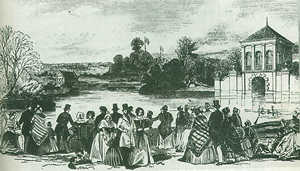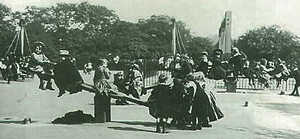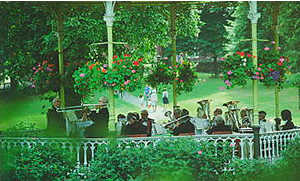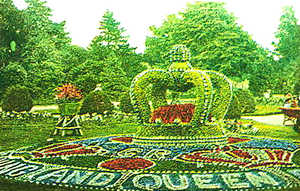
The first urban parksIn 1833 urban parks were born, in Great Britain. The first was in Preston, followed quuickly by Birkenhead [right], Derby and Southampton. They were built on public subscription. They were opportunities for investors, because their plans included the sale of select housing around their perimeter — a house was more desirable if it overlooked the greenery of the park. Joseph Paxton designed many of them - such as Crystal Palace - and ensured that they contained a variety of environments. The Victorians then seeded public parks everywhere, and by 1900 almost every town had sprouted at least one. Parliamentary supportIn the 1850s, two acts of Parliament stimulated donations of land for parks, such as Calthorpe and Sefton. Building them also solved problems of unemployment - for example Miller Park in Preston was built by unemployed cotton workers following the "cotton famine". The Public Health Act of 1875 enabled local authorities to maintain land for recreation and to raise funds for this purpose. It was supported by organisations such as The Commons Preservation Society, dedicated to ensuring that people had access to what was formerly common land. The five minute ruleIt was then discovered that besides the larger parks, smaller ones were needed for use by local people - and this was supported by the Open Spaces Act of 1881 and the Disused Burial Grounds Act of 1884. Nowadays we know that parks need to be no more than five minutes away to stand a chance of being used.
"Urban parks are one of Britain's great, green creations" - Richard Rogers --> local parks
To commission work of this nature, contact David Thorpe. |
 |
 |
|
|
Top: Birkenhead Park. Above and Left: Victoria Park 1900 - and its drinking fountain. Below: Bandstand in Abbey Grounds, Hexham, Northumberland. Below middle: George V coronation display, West Park Wolverhampton, 1911. Bottom: Lodge, Dundee's Baxter Park. |
|
|
|
|
|
|
 A history of greenspace and parks
A history of greenspace and parks


